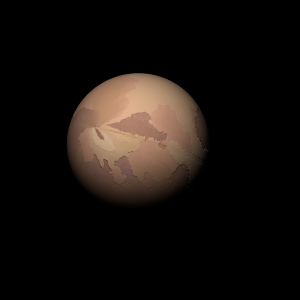|
|
Space Astro
|
Info for exoplanet "Yong Wwen"
| Scientific (actual) data |
|---|
| Name | GJ 9827 b |
| Planet status | Confirmed |
| Planet mass | 0.01532 |
| Radius | 0.13641 |
| Orbital period | 1.20898 |
| Semi major axis | 0.01866 |
| Orbit eccentricity | 0 |
| Inclination | 85.8 |
| Discovered | 2017 |
| Updated | 2023-12-10 |
| Tzero tr | 2457740 |
| Impact parameter | 0.57 |
| K | 4.1 |
| Temperature (kelvin) | 1043.5 |
| Publication | Published in a refereed paper |
| Detection type | Primary Transit |
| Mass measurement type | Radial Velocity |
| Radius measurement type | Primary Transit |
| Alternate names | K2-135 b |
| Star name | GJ 9827 |
| Right ascension | 351.77° |
| Declination | -1.29° |
| Mag v | 10.4 |
| Star distance | 30.3 |
| Star metallicity | -0.28 |
| Star mass | 0.659 |
| Star radius | 0.651 |
| Star sp type | K6V |
| Star temperature | 4255 |
| Wikipedia article | GJ 9827 b |
Back
| |
| Fictional info (?) |
|---|
| Suggested name | Yong Wwen |
| Planet type | Hot planet |
| troublesome journey. |
| Atmosphere | Ethane | 63% |
| Helium | 23% |
| Hydrogen peroxide | 9% |
| Formaldehyde | 3.1% |
| Hydrogen deuteride (HD) | 0.74% |
| Atmospheric pressure | 0.3 bar |
 |
| No known satellites |
| Google search for Yong wwen |
|
Website by Joachim Michaelis
|
|
|
|